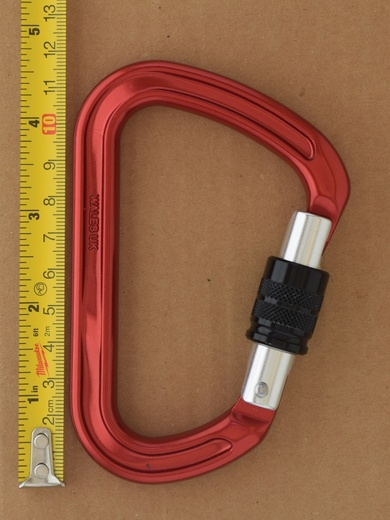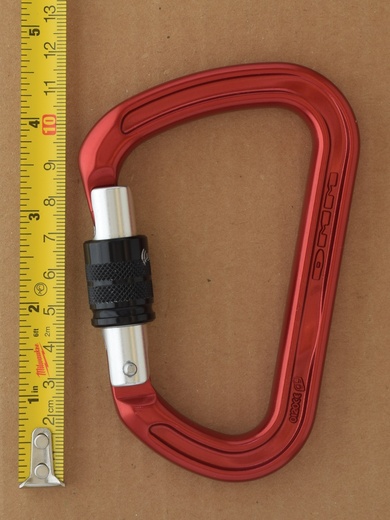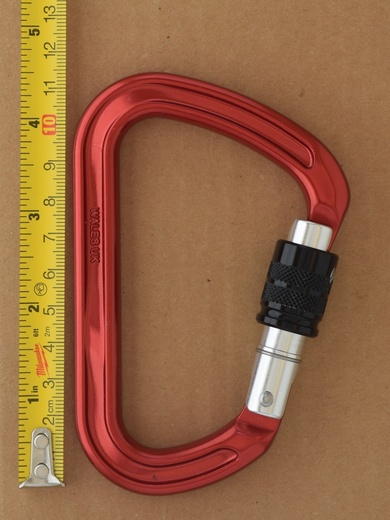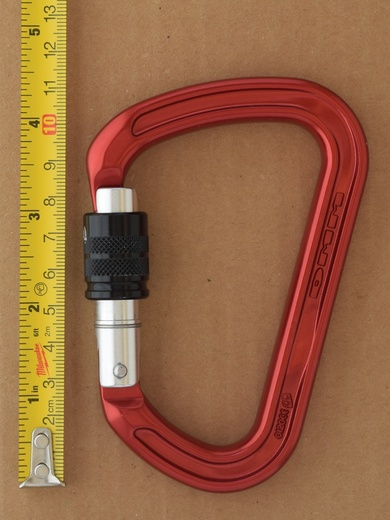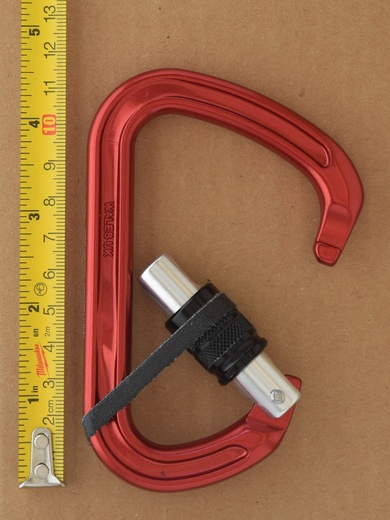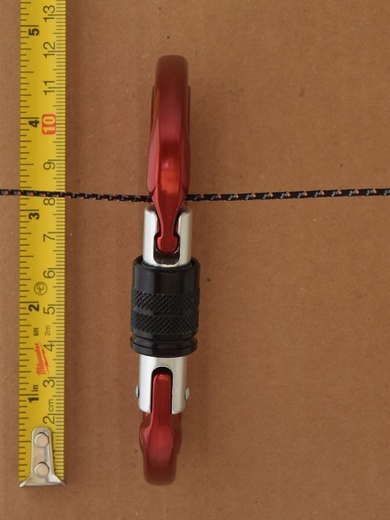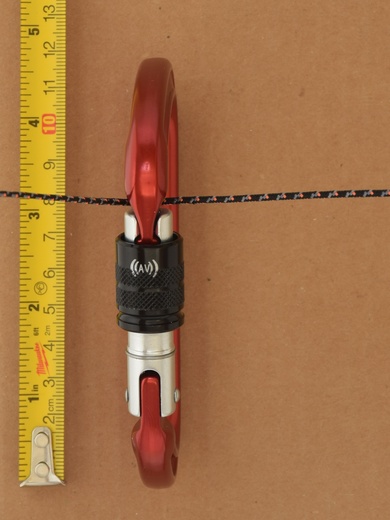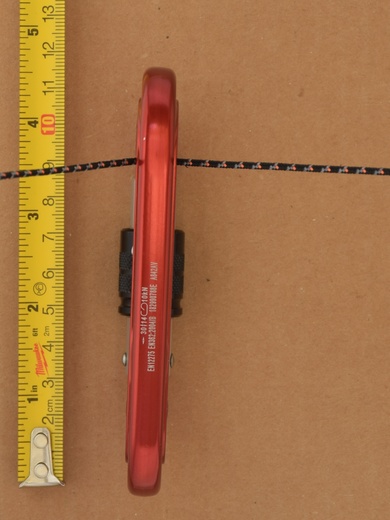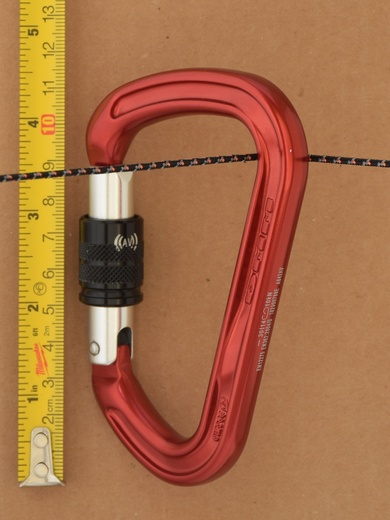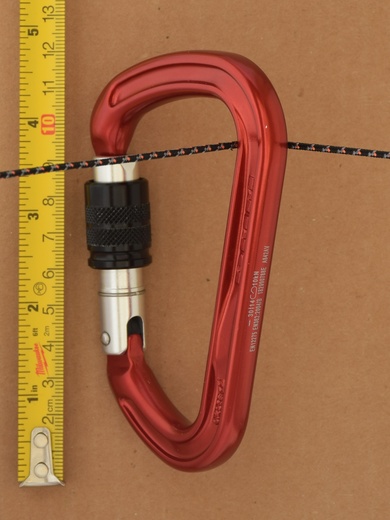| Name: | DMM Klettersteig Alloy Anti-Vibe Screwgate |
| Category: | screw lock |
| Locking Type: | manual |
| Locks: | screw |
| Unlock Style: | gate stopped - gate stop |
| Sleeve Rotation: | 990° (unlocked) | 1305° (maximum) |
| Shape: | asymmetric D |
| Material: | aluminum |
| Profile: | I-Beam |
| Nose: | notch & pin |
| Nose Guard: | none |
| Rivets: | domed |
| Gate Shield: | full |
| Weight: | 86 g |
| Dimensions: | Length: 117.1 mm Width: 77 mm Depth (basket end): 10.62 mm Gate Opening: 25.7 mm |
| Strength Ratings: |  30 kN | 30 kN |  14 kN | 14 kN |  10 kN 10 kN |
| Other Markings: | Forged: 0120CE (book icon) DMM | WALES UK EN12275 EN362:2004/B 182990788E A842AV |
| Batch Marking Location: | spine-exterior |
| Collection Criteria: | ★ Mechanically Interesting |
| Summary: | anti-vibration screwlock resists accidental opening |
| Description & Commentary: | The name Klettersteig is the German term for what is called Via Ferrata in Italian and English - a hiking/climbing route protected by steel cables and ladders placed into the rock. The high strength, large gate opening and basket makes it well suited for rigging and master points. As with other oversized Asymmetric D and HMS style carabiners, the Klettersteig body shape and weight positions it as somewhat of a speciality carabiner - something that recreational users could find useful, but would be unlikely need more than 1-2. In recent years, DMM has focused this model on the professional market. As of 2023, the DMM Klettersteig carabiner body is only offered in offered in 3 styles: Triple Action w/ ANSI rated gate, Triple Action w/ Keeper Bar & ANSI rated gate, Double Action w/ ANSI rated gate. Previously, it was offered in non-ANSI gates, screwlock and DMM's Durolock. This particular example sports a unique anti-vibration screwgate locking mechanism. Under certain conditions vibrations can cause a screwgate carabiner to unintentionally unlock (or lock, although this is less critical). Concern about accidental unlocking is one of the reasons some climbers prefer to rig a screwgate carabiner with the gate facing down. The idea is that gravity will prevent or at least impede the locking sleeve from unscrewing enough to unlock the carabiner. Out of habit, I typically position a screwlocking carabiner gravity-fed. That said, if the carabiner's orientation to gravity is a critical factor in the rigging I would rather use a different rigging method! I have personally seen multiple screwlock carabiners unlock due to vibrations with the gate sleeve facing in either direction - it's pretty wild to see a sleeve rotating upwards into the unlocked position. DMM's solution here is to include a rubber O-ring on the gate which engages with the locking sleeve, increasing the amount of friction any vibration would need to overcome. The sleeve requires 2.75 rotations to move from the locked position to an unlocked one, with the O-ring only engaged for the first full turn from the completely locked position. The drag from the O-ring makes locking the carabiner slightly slower than it would be with a free-turning sleeve, but this solution balances security with the speed and ease of locking - while still maintaining the convenience of a lock which is only engaged when you need it. |
| MPN: | A842AVRD |
| Manufacturer Color: | Red |
| Technical Notice: | Technical Notice |
